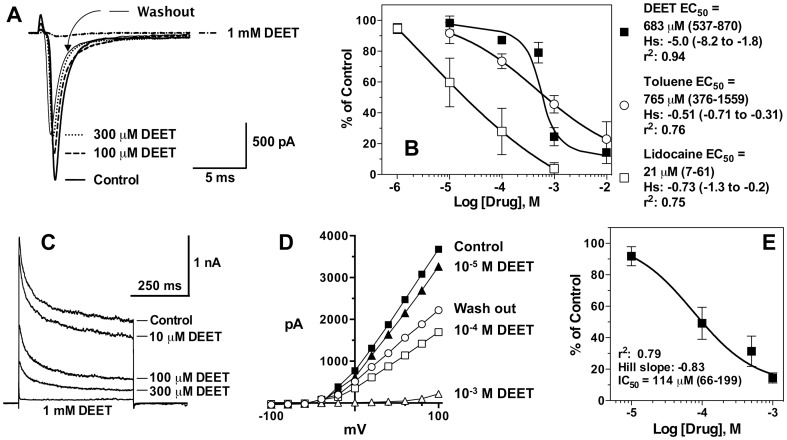Figure 6. Block of neonatal rat cortical sodium and potassium channels by DEET and related compounds.
A) Inward sodium currents activated by a 15 msec pulse to 0 mV from a holding potential of −80 mV. Control is the peak inward sodium current before treatment. Increasing DEET concentrations blocked the current, each trace taken after 1 min incubation in drug, and there was little change thereafter. Each trace is matched in form to treatment: thick line, Control; thin line, Washout; dashed line, 100 µM DEET; dotted line, 300 µM DEET; and dotted/dashed line, 1 mM DEET. B) Concentration-response curves generated from peak sodium currents as shown in A, replicated across different cells treated with DEET (n = 3), toluene (n = 6), or lidocaine (n = 4). Symbols are mean percentage of control current amplitude, with each concentration of blocker replicated 3–6 times. Error bars represent SEM of currents. C) Typical outward currents activated by a 500 msec pulse to +60 mV from a holding potential of −80 mV, and displayed concentration-dependent block by DEET. D) Typical current-voltage relationships and DEET inhibition of potassium currents in rat cortical neurons. Currents were evoked by stepping the membrane voltage between −100 and +100 mV in 20 mV increments from a holding potential of −80 mV. Amplitude of the sustained current was calculated at 200 msec. E) Concentration-response curves for DEET-mediated inhibition of rat neuronal potassium channels from recordings as shown in C, using responses at +60 mV. Symbols are mean percentage of control current amplitude, and error bars represent SEM of currents replicated across different cells (n≥3).

